What Are The Pros And Cons Of Ash Hardwood Flooring?

Hardwood flooring has been a popular choice for homeowners for quite some time. No matter what your style, hardwood flooring creates a timeless look. It also increases your home’s resale value!
If you’re thinking about installing or updating your hardwood floors, there are many species of wood from which to choose. Oak and maple are popular choices. But ash wood is often overlooked. If you’d like to take a chance on something beautiful and different, you might consider ash.
Because of its light color, ash lends itself to a contemporary aesthetic. It’s highly durable and water-resistant. With high elasticity, ash is a good shock absorber, making it perfect for open spaces where echoing is likely to occur. Adversely, ash is endangered in the US, and therefore, an unsustainable choice. Because it’s hard to find, there’s a higher chance of inconsistencies in the flooring as a whole.
Do You Need to Hire a Flooring Contractor?
Get free, zero-commitment quotes from pro contractors near you.

What is Ash Wood?
Ash wood comes from white ash trees, which are native to parts of Europe and North America. Ash trees are highly populous in the northeast United States.
The wood itself is hard and durable with excellent character and grain definition. It’s the material often used for tool handles as well as the most popular choice for baseball bats.
When compared to other hardwoods, the color of ash is quite unique. It has a color variety that ranges from creamy white to light grayish brown, and the heartwood shows up as a deep brown.
Contemporary Aesthetic
Ash’s light color makes it perfect for contemporary styles. It lacks the red and pink overtones of oak but provides more warmth than maple. Large, open spaces are the perfect place for ash because its lightness makes the area seem even bigger.
The contemporary aesthetic is all about clean lines and simplicity. The grain definition of ash is such that it will add character to a space without overwhelming it with busy patterns.
Janka Hardness Scale
The Janka Hardness Scale is a way to rank a wood’s durability to scratches, dents, and wear. It’s used in the flooring industry to compare types of hardwoods for practicality and workability. The higher a wood’s Janka rating the more durable it’s considered.
With a ranking of 1300, oak is the industry standard for hardwood. The average Janka rating for ash is 1320, which puts it between red oak (1290) and white oak (1360).
This means that ash is a hard and durable wood, able to handle high volumes of foot traffic and wear from kids and pets. Ash is not as hard as maple (1450) or hickory (1820) but that makes it an easier wood to cut.
Pros of Ash Hardwood Flooring
When choosing which hardwood flooring is best for your style and needs, it’s always good to take a look at the pros and cons of the material. Ash has many great benefits.
Elasticity
Ash is a good shock absorber because of its elasticity. This makes it good for large, open spaces where echoing may occur, such as a loft or open floor plan. It also tends to feel more comfortable underfoot than other hardwoods.
Durability
Ash wears well over time. It won’t splinter or crack but remains smooth under friction. This makes it an excellent choice for places with high foot traffic. Not much damage can be done to it by rambunctious children or pets.
True Colors
The naturally light color of ash fits beautifully into the contemporary style. With ash, no special sanding or staining is necessary to achieve the airy colors of the contemporary aesthetic. Though, it does take stains well and holds them well because of its porous structure.
Solid or Engineered
Ash is available in a variety of ways. You can get solid planks where the entire board is made of ash or an engineered version that uses a percentage of ash wood. The engineered planks make for easy self-installation. They can be installed as a floating floor.
Affordable
Although it’s not the cheapest, it’s not the most expensive, either. Ash is comparable to red oak, ranging from $5 to $7 per square foot. The cost is dependent on color and quality.
Engineered wood would be the cheaper option since it contains less authentic ash in its materials. However, some top-quality engineered wood can be even more expensive than solid wood options.
Good Water Resistance
No wood floor is completely waterproof. But hardwoods, such as ash, tend to be more water-resistant than softwoods because their fibers are tightly packed. This means they don’t absorb water easily. Ash’s durability includes its water resistance.
While not recommended for a bathroom, ash is a great floor for any other room where there might be an occasional spill.
Cons of Ash Hardwood Flooring
While it has many benefits, ash also has its downfalls. To get a complete picture, let’s take a look at some of the cons of using ash for hardwood flooring.
High Maintenance
Yes, ash is durable. It’s not likely that you’d have to replace a cracked board or sand down a rough spot. However, it’s not resistant to moths or termites. So, if you live in an insect-heavy area, you’ll need to remain consistent with treatments to keep them away.
Hard to Find
Old-growth ash will give you long, wide planks that will really show off its character. However, these are hard to come by. That’s because of the Emerald Ash Borer. This beetle feeds on the ash wood, rendering it unusable. Because of the Emerald Ash Borer, ash trees are considered endangered.
New-growth ash has a similar problem. In order to get to it before the Emerald Ash Borer, early harvesting is necessary. The earlier the trees are cut down the less likely you are to have long, wide boards of wood. So, the character may not be as prominent.
However, scientists are working to solve this infestation problem. So hopefully, more usable trees will be available in the near future.
Inconsistent Look
Old-growth ash wood can be found, though not easily. And when it is available, the size of the boards and the coloring may be inconsistent.
This can be a plus for contemporary style lovers because the inconsistencies will make for an interesting floor. But if you want your floors to have a more traditional and consistent look, you may want to stay away from ash.
Not So Eco-Friendly
In the United States, ash trees are endangered. For those who are invested in sustainable living, you may want to consider another flooring option outside of ash.
Related Questions
Although we discussed in depth the pros and cons of ash flooring, you may still have more questions. Below are some other things people wondered about using ash wood for floors.
Does ash take stain well?Yes, ash is among the hardwoods that accept dyes and stains well. It has a porous structure that makes it a good choice for pickling. Dyeing ash will create a more consistent look. Because ash is a ring-porous wood, using pigment stain will accentuate its large pores.
Does ash darken with age?If you decide to go with a clear finish on your ash hardwoods, know that it will yellow over time. It ages similarly to sugar maple. However, unlike maple, ash takes on stain smoothly without any blotching. So, if you didn’t want the yellowing, a stain of your choice could be applied. And it won’t distort the ash’s character.
Does ash flooring need to be acclimated before installation?Just as with any other solid wood flooring, ash needs to be acclimated to its environment before installation. The wood’s moisture content needs to adjust to the conditions of the room to avoid warping or buckling.
Before installing your ash floors, it’s best to wait 72 hours for the wood to acclimate. Engineered wood doesn’t require as long of an acclimation period. However, it should still be stored in the room where it will be installed.
How do you clean ash hardwood floors?Ash flooring doesn’t require any special treatment in order to keep it clean. It’s best to use a soft broom or dry mop to sweep up any debris that might scratch the surface. If your floor sees a lot of foot traffic and doesn’t have a urethane finish, you can use a damp (almost dry) mop with a neutral-pH wood cleaning product. Doing that treatment once a week is enough. To save the floor from water damage, you’ll want to wipe spills immediately.
Do You Need to Hire a Flooring Contractor?
Get free, zero-commitment quotes from pro contractors near you.

Conclusion
Ash has many great attributes, making it an excellent choice for your hardwood floors. It is highly durable, standing up beautifully against scratches, dents, and water. Although it can be hard to find, it’s generally an affordable material. It’s comparable to oak both in price and durability.
The unique look of ash wood is not for everyone. But it works perfectly in a contemporary aesthetic where small inconsistencies aren’t an issue. While it takes some upkeep against insects, cleaning ash flooring couldn’t be easier.
If you’re looking for a durable, lightly-colored hardwood that accepts stains well, you can’t go wrong with ash.

Brigid Levi is a wife, mother, and freelance writer who enjoys a good DIY project and creating beautiful spaces within her home. From cleaning and organization hacks to home decor ideas, she loves helping people in their quest to turn a house into a home. Her hobbies include pretending to be Joanna Gaines while updating her home with her husband and performing in local theater productions.
More by Brigid Levi



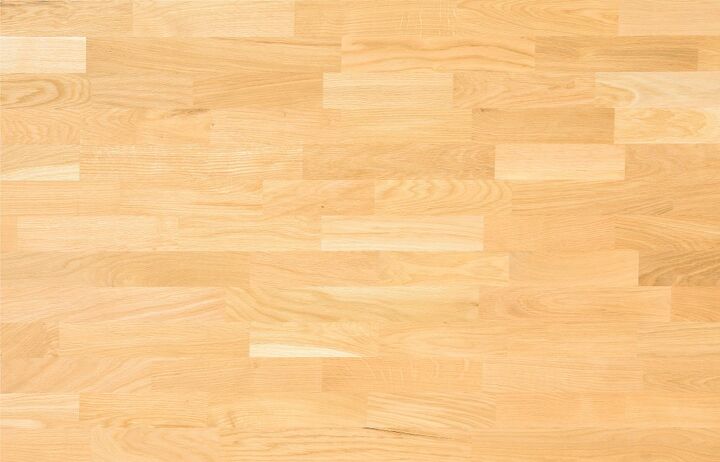






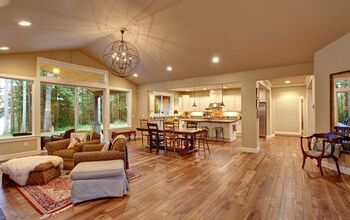
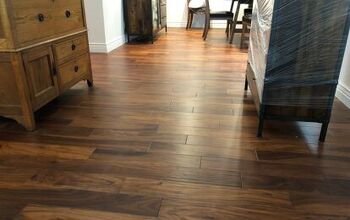
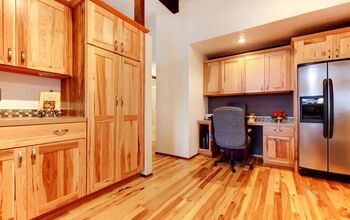
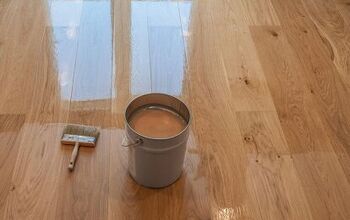




![12 Washing Machine Brands to Avoid [with Recall Data]](https://cdn-fastly.upgradedhome.com/media/2023/07/31/9075781/12-washing-machine-brands-to-avoid-with-recall-data.jpg?size=350x220)








